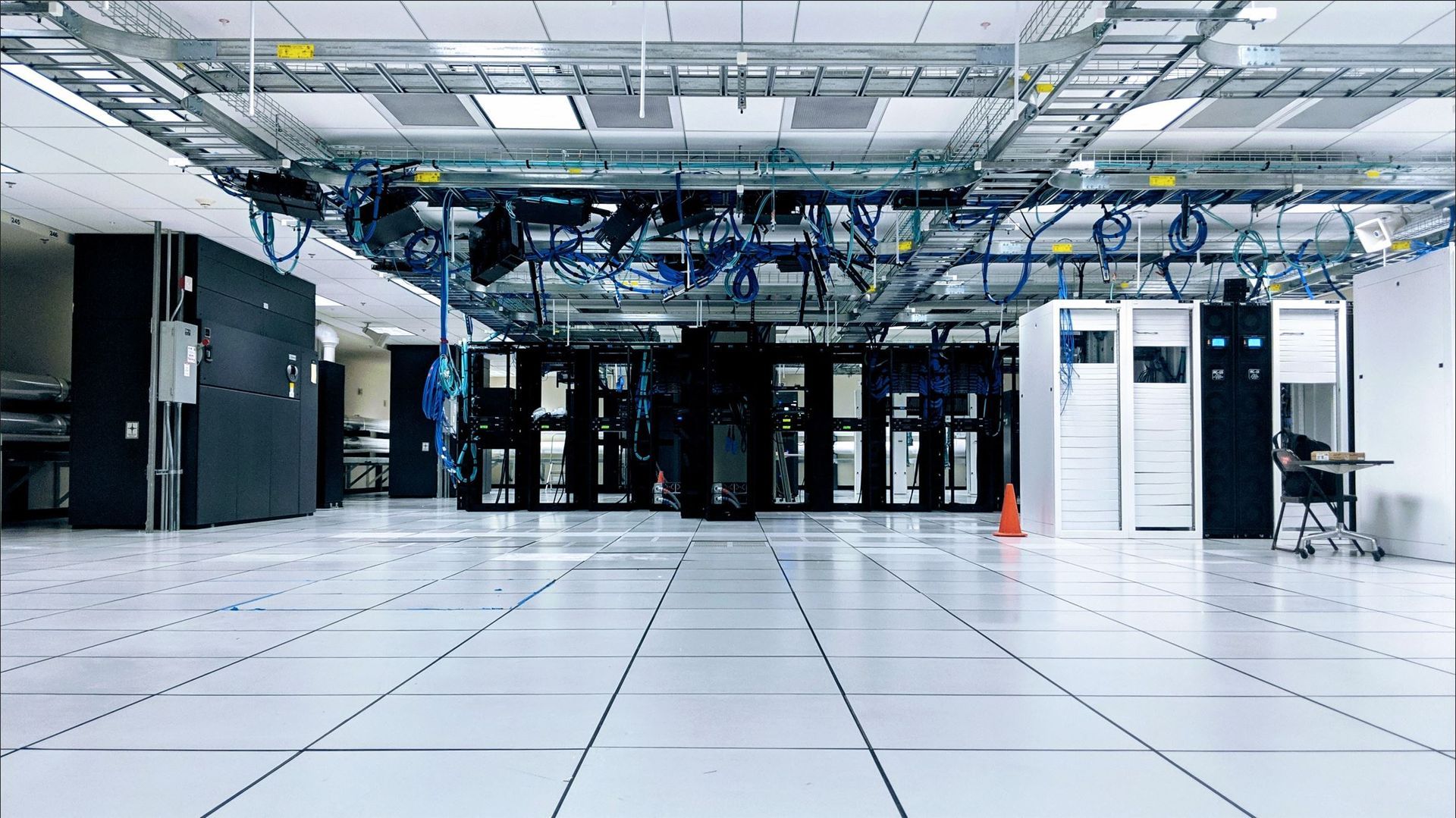How to Develop and Implement Effective IT Security Policies
Learn How To Develop and Implement Policies to Increase IT Security

Executive Summary ~1 min
In the digital age, the threat landscape is evolving at an unprecedented pace, making robust IT security policies more crucial than ever. This blog post offers a comprehensive guide on creating and implementing effective IT security policies that safeguard a business's sensitive information while promoting a security-conscious culture.
The primary emphasis is the importance of holistic employee education in maintaining IT security. Employees form an organization's first line of defense and, when trained effectively, can significantly minimize the risk of security breaches. Therefore, businesses should strive to foster an environment where employees are aware of the importance of cybersecurity, understand how to follow best practices, and are encouraged to report suspicious activity.
Learn details on strategies for educating employees on IT security, emphasizing the importance of engaging content, real-life examples, and regular testing to ensure comprehension and application of security protocols. Through this holistic education, businesses can create a culture of security awareness that promotes responsible cybersecurity practices across all levels of the organization.
A unique aspect is an emphasis on tailoring IT security policies to meet the specific needs of an organization. It highlights how an organization's size, nature, structure, and culture should inform the development of its security policies. By doing so, an organization can ensure its policies align with its risk tolerance level and address specific challenges it faces in protecting sensitive data.
This post underscores the necessity of IT security policies in today's cyber landscape. It offers a recap of the key steps involved in developing and implementing these policies, including identifying information assets that need protection, conducting risk assessments, defining the policy itself, communicating policies across all departments, and scheduling regular reviews and updates.
This guide reinforces the idea that safeguarding an organization from cyber threats is not just about avoiding financial losses. It also involves protecting the organization's reputation with its stakeholders and demonstrating a commitment to responsible business practices. In the end, the development and implementation of effective IT security policies is a wise investment, offering benefits that extend beyond simply thwarting cyber threats.
In a world where data breaches are increasing, this comprehensive guide provides businesses with practical steps to developing and implementing robust IT security policies. It serves as an invaluable resource for organizations aiming to bolster their cybersecurity measures and cultivate a culture of security awareness among their employees.
Introduction
~16 min
In our digitally-dominated world, enterprises have become increasingly dependent on technology for storing and processing their sensitive data. This symbiosis with technology, though advantageous, has escalated the risk of cybersecurity threats. Cybersecurity risks vary extensively, from malware incursions and phishing exploits to ransomware intrusions, each with the potential to instigate data breaches, financial catastrophes, and reputational harm.
Amidst these challenges, IT security policies serve as a crucial foundation. These protocols establish clear-cut rules for technological usage among employees and delineate steps necessary for the safeguarding of delicate information. Robust IT security policies should address a spectrum of issues, including password governance, data backup strategies, remote access systems, and incident response procedures.
The formulation and application of resilient IT security policies require insights from multiple stakeholders within the organization. The synergy between IT specialists and other departments is imperative for conceiving policies that balance the mitigation of vulnerabilities with the practical efficiency of employees. With a sound IT security framework in place, enterprises can notably minimize their susceptibility to cyber onslaughts, maintaining customer trust and shielding their financial health.
The initiation of a robust IT security policy begins with identifying and evaluating associated risks. Organizations must conduct an exhaustive risk examination of their vital systems, networks, and data to uncover potential weak points. Once these risks are exposed, bespoke policies can be fashioned to address them effectively.
Subsequently, it's essential to construct a holistic set of policies encompassing all facets of IT security. This encompasses guidelines for password management, access controls, network security, data backup protocols, and incident response blueprints, among others. Clarity and succinctness in policy communication are vital to enable employees to comprehend and fulfill their roles in IT security maintenance.
The culmination of this process is the efficient implementation of IT security policies across the organization. This entails equipping employees with the necessary training on the significance of information security and the means to abide by company policies. The process necessitates continuous monitoring and routine updates to counter evolving threats and emerging technologies. Adherence to these steps allows organizations to manage their information security risks proficiently, safeguarding critical data from cyber threats.
Understanding Cyber Threats
As we weave our way through the intricate labyrinth of the digital age, cyber threats emerge as formidable opponents for organizations, irrespective of their scale. Cyber threats encompass malicious activities that aspire to disturb, damage, or compromise computer systems, networks, or individual devices. Cybercriminals deploy a variety of tactics, such as phishing, malware, ransomware, and social engineering attacks, to exploit vulnerabilities and pilfer valuable information.
The first step towards engineering comprehensive IT security policies is acquainting oneself with the multitude of cyber threats that lurk in the digital shadows. External threats, originating outside a large organization's walls, are often the handiwork of nation-state entities or criminal syndicates fueled by the allure of financial gain. On the other hand, internal threats emanate from within the organization, often perpetrated inadvertently or deliberately by employees or contractors, wreaking havoc on the IT infrastructure.
Effective risk mitigation necessitates an all-encompassing IT security policy that addresses every potential threat, while ensuring employees are made aware of possible risks and equipped with the knowledge to avert them. Robust policies instill a culture of cybersecurity vigilance within the organization, thereby reassuring customers that their precious data is safe from the clutches of cyber malefactors.
Common Types of Cyber Threats and Their Impact on Businesses
One of the predominant forms of cyber threats is phishing. Here, cybercriminals masquerade as trustworthy entities, dispatching fraudulent emails or texts to employees in a bid to con them into revealing sensitive data, such as passwords or credit card details. The ramifications of a successful phishing exploit can send shockwaves through a business, granting hackers access to confidential data, plundering company funds, or seizing control of entire digital ecosystems. Such as a recent hack of tech media company Linus Tech Tips, which had multiple accounts hacked via a spear phishing email that hijacked browser tokens.
Malware, another pervasive cyber threat, denotes malicious software crafted by hackers to gain unauthorized entry into company networks and devices. The malware spectrum is broad, encapsulating
viruses, worms, Trojan horses, and more. Malware attacks can instigate data breaches, system shutdowns, and theft of intellectual property, often serving as a launching pad for other cybercrimes like ransomware.
Ransomware, a type of malware, holds a victim's computer, network, or entire server infrastructure hostage, demanding a ransom, typically in cryptocurrencies such as Bitcoin or Monero, for its release. This nefarious tactic has gained traction in recent years due to its potential to paralyze business operations, compelling victims to pay hastily. The aftermath for businesses can be calamitous, causing lost revenue from operational downtime, and tarnishing reputations as data breaches become public knowledge - thus accentuating the imperative need for formidable IT security policies. Read about how to avoid business interruptions such as ransomware by employing a 3-2-1 backup strategy and more with my blog post about
How to Avoid Business Interruptions with IT.
The Evolving Nature of Cyber Threats and the Importance of Staying Informed
As our world grows increasingly intertwined with the digital realm, cyber threats are evolving and amplifying their sophistication. Cyber adversaries are relentless in their pursuit of novel techniques to exploit weak spots in computer systems, networks, and software, making it imperative for organizations to stay abreast of the latest in cyber threats and defensive strategies.
Staying updated is best achieved through regular perusal of industry news and participation in cybersecurity conferences or webinars. Equipping employees with the skills to detect and evade common phishing strategies, malware attacks, and social engineering ploys is equally important. Further, implementing robust IT security policies can curtail risk by laying down clear rules for data access, usage of company devices, and responding to security incidents.
Ultimately, staying vigilant against cyber threats is an ongoing journey demanding diligence and proactive involvement from every member of an organization. By prioritizing cybersecurity education and adhering to solid IT security policies, businesses can fortify their defenses against the ceaselessly evolving landscape of digital threats.
Developing an IT Security Policy
The creation and enactment of an effective IT security policy form the vital lifeline of any organization that is the guardian of sensitive information. The process commences with identifying and assessing the various risks that could besiege the organization, while also taking a hard look at its existing security stance. This can be achieved through a comprehensive risk assessment that ferrets out potential threats, vulnerabilities, and their potential impact on the business.
Upon identifying these risks, policies tailored to combat them should be formulated. These guidelines should establish a framework for access control, password management, data backup methodologies, incident response strategies, and more. It is crucial to incorporate the insights of key stakeholders in the policy development process to foster a sense of ownership and ensure alignment with overarching organizational objectives.
Once the policies have been crafted, their essence must be effectively communicated to all employees through dedicated training sessions or educational resources. The policies should also be updated regularly to accommodate the fast-paced changes in technology and business practices. A meticulously developed and deployed IT security policy enables organizations to mitigate risk and shield their valuable assets from the onslaught of cyber threats.
Identifying Critical Assets and Assessing Risks
The identification of critical assets forms the bedrock of effective IT security policy formulation. Critical assets could include tangible elements such as servers, software applications, and data storage systems. These assets often harbor sensitive company information or customer data that need to be insulated from the cyber threat landscape. Identifying these assets allows organizations to prioritize their security initiatives and allocate resources optimally.
Equally significant is the assessment of risks that these critical assets could face. This entails analyzing potential threats to the organization's technology infrastructure, gauging their likelihood, and estimating their potential impact on business operations. Risks could emanate from a plethora of sources, such as external hackers, insider threats, or even natural disasters. A comprehensive risk assessment arms organizations with the insights to pinpoint vulnerabilities in their systems and take preemptive action to thwart potential attacks.
In essence, the identification of critical assets and the corresponding risk assessment serves as the foundational pillars of effective IT security policy development. These steps enable organizations to prioritize their resources for maximum protection against cyber threats while ensuring business continuity in the face of potential disruptions.
Establishing a Risk Management Framework
The establishment of a sturdy risk management framework is the cornerstone of developing and enacting effective IT security policies. The framework should delineate the steps involved in identifying, analyzing, evaluating, and managing the risks associated with the organization's IT infrastructure. A comprehensive risk assessment should be undertaken to unearth potential threats and vulnerabilities that could impact the confidentiality, integrity, and availability of information.
Upon identification and assessment of risks, appropriate controls should be put in place to mitigate or eliminate them. These could involve technical measures such as firewalls or encryption, as well as administrative measures like employee security awareness training. It is imperative to regularly monitor and test these controls to ascertain their ongoing efficacy.
A dynamic review and refinement of your risk management framework are mandatory to adapt to changes in technology and threats. This could entail updating policies and procedures based on fresh information or conducting supplementary risk assessments as new systems are integrated within the organization. A robust risk management framework empowers organizations to fortify their IT systems against potential cyber-attacks and other security breaches.
Defining Roles and Responsibilities
Clear delineation of roles and responsibilities forms an integral part of the process of crafting and deploying effective IT security policies. This involves singling out the key players responsible for diverse aspects of the policy, including monitoring compliance, managing breaches, updating procedures, and liaising with employees. Clear demarcation of these roles fosters a sense of responsibility and facilitates effective collaboration.
One strategy to ensure clarity in roles is to create an organizational chart outlining the various positions involved in policy implementation. This can expose any gaps or overlaps in responsibilities while providing a visual representation of the position of each role within the larger policy framework.
Beyond defining roles within the organization, it is also essential to engage with external stakeholders, such as vendors or contractors who have access to sensitive data or systems. Clear communication of expectations and requirements can help minimize risk and ensure that all parties are working towards a shared goal.
Developing Policies and Procedures
Formulating policies and procedures is a critical stride toward safeguarding IT systems. The journey towards crafting effective IT security policies begins with identifying the risks that could impact the organization's information assets. A comprehensive risk assessment aids in determining areas that necessitate attention and resources.
Once the potential risks have been mapped, it's imperative to establish a set of policies and procedures that outline best practices to mitigate those risks. These policies need to be crystal clear, concise, and accessible to all employees dealing with sensitive data or accessing IT systems. They should also be dynamic, and updated regularly in line with emerging threats and evolving technologies.
To drive these policies home, continual training and communication with staff across all levels of your organization is crucial. This includes regular reinforcements of security best practices, mandatory training sessions on key topics such as password management and phishing scams, and routine audits to ensure compliance with the established policies. This comprehensive approach reduces the organization's exposure to cyber-attacks and safeguards valuable information assets from unauthorized access or theft.
Implementing the IT Security Policy
Once the IT security policy has been meticulously crafted, it's time to bring it to life. This critical phase involves ensuring that the policy is not just a document, but rather a lived experience for all involved. It begins with effectively communicating the policy to all employees, developing the mechanics for monitoring and enforcing the policy, and providing training on best practices to maintain a secure IT ecosystem. It can be beneficial to create a clearly articulated document that lays down specific responsibilities and expectations for everyone in the organization.
A critical component of implementing the IT security policy is to keep all software and hardware current with the
latest security patches and updates. Regular vulnerability testing can prove to be a significant asset in spotting any potential chinks in your IT armor. Additionally, having robust access controls in place can help limit who can view or modify sensitive data.
Organizations should have well-rehearsed incident response plans detailing the action plan in the event of a breach. This includes nominating team members responsible for responding to incidents, documenting steps taken during remediation efforts, and refining future response strategies based on lessons gleaned from past incidents. Following these guidelines when implementing an IT security policy, organizations can armor themselves better against potential cyber threats.
Communicating the Policy to Employees and Stakeholders
When it comes to IT security policies, communication is not just the key, it's the whole lock and door. Ensuring that employees and stakeholders have a solid understanding of cyber threats and how to safeguard sensitive information is paramount. One effective strategy is to hold regular training sessions for all employees. These sessions should cover cybersecurity fundamentals, such as password management, phishing attacks, and safe browsing practices.
Besides training sessions, the policy itself should be easily accessible and comprehensible. This can be achieved by creating an online hub with relevant documents, FAQs, and contact information for IT support. Additionally, stakeholders should be kept up to date on any changes or updates to the policy. Regular communication via email newsletters or company-wide announcements can help keep everyone in the loop.
Effective communication of IT security policies calls for a proactive approach that involves ongoing education and accessibility. By adhering to these steps, organizations can significantly cut down their risk of cyber-attacks while cultivating a culture of security mindfulness among their employees and stakeholders.
Enforcing the Policy and Ensuring Compliance
Once an IT security policy is in place, enforcing the policy and ensuring compliance is paramount. This can be achieved by laying out a clear set of repercussions for non-compliance and reinforcing to employees the importance of adhering to the policy. Frequent training sessions should be held to educate employees about any updates or changes to the policy.
Regular system and data monitoring should also be implemented to detect any policy breaches or violations. This could involve leveraging software tools to monitor network traffic, access logs, and other activity logs. Any suspicious activity should be promptly investigated, and appropriate measures taken, if necessary.
Finally, maintaining open lines of communication with employees regarding the IT security policy is vital. Employees should feel at ease reporting any potential issues or concerns they might have regarding compliance with the policy. By fostering a culture of transparency and accountability around IT security, everyone in the organization can be part of maintaining a secure environment.
Implementing Technical Controls to Support the Policy
An essential part of IT security policy development and implementation involves putting in place technical controls. These include software, hardware, and network devices used to limit access to sensitive data or systems, working in harmony to enforce the organization's policies.
Technical controls include authentication protocols like passwords, biometrics, and two-factor authentication. Encryption, another technical control, can be used to protect data, whether at rest or in transit. Firewalls form an important line of defense, limiting access between networks, while
Intrusion
Detection
Systems (IDS) remain vigilant for potential threats.
While implementing technical controls alone cannot provide complete security, they form a crucial layer of protection in conjunction with other policies, such as administrative and physical controls. To ensure effective implementation, it's essential to conduct regular testing and assessments of these technical controls and keep the relevant policies under review.
Monitoring and Updating the Policy
Maintaining an effective IT security policy isn't a one-time activity but rather an ongoing process. As technology progresses and new threats emerge, it's vital to frequently revisit your policies, evaluate their effectiveness, and revise them as necessary. The act of monitoring involves assessing the efficacy of existing policies, pinpointing potential gaps or weaknesses, and making the required amendments.
Involving all stakeholders when you're evaluating and revising your IT security policy is important. The collective insights of employees, management, IT personnel, and other relevant parties can offer a comprehensive view of how well the policy is functioning and suggest potential enhancements to minimize risks.
After refreshing your IT security policy, it's vital to communicate these changes to all concerned parties. Ensure everyone understands what has changed and why the revision was necessary. Regular training sessions can keep your team informed of any new risks they may encounter while performing their work. By adhering to these steps, you can ensure your IT security policies are in sync with current cybersecurity trends and remain effective over time.
Regular Monitoring and Reporting to Assess the Effectiveness of the Policy
Regular monitoring and reporting play a critical role in gauging the effectiveness of an IT security policy. This involves tracking policy implementation, identifying areas for improvement, and determining if the policy has achieved its intended objectives. Active monitoring can also help organizations spot potential security breaches and intervene before they evolve into serious incidents.
A robust monitoring plan should encompass risk assessments, vulnerability scans, compliance audits, and incident response testing. It's important to establish clear metrics for measuring the success of your policies against specific objectives. The frequency of reporting should align with the nature and complexity of your IT landscape.
Sharing the results from regular monitoring with stakeholders in a timely manner ensures everyone stays informed about progress towards set targets and areas requiring attention to boost overall IT security posture. This constant feedback loop enables organizations to fine-tune their policies for better outcomes.
Updating the Policy to Reflect Changes in Technology and Business Operations
As technology and business operations evolve, it becomes necessary to update existing security policies to keep pace with these changes. Policy revisions should incorporate any new regulations, standards, and procedures relevant to your organization's operations. Your IT department should actively identify areas requiring updates and communicate these revisions across the company.
When amending security policies, it's crucial to ensure they align with the organization's overarching business objectives. This can prevent conflicts between the goals and priorities of different departments. Regular audits of policies help detect gaps or inconsistencies that have crept in over time due to shifting technologies or processes.
As you implement updated policies, employees need to be thoroughly trained on any new procedures or protocols. Clear guidelines should be provided on how they can adhere to these new rules while still performing their daily tasks effectively. Regular communication about policy updates can keep your team informed and actively involved in maintaining a secure IT environment.
Conducting Regular Audits and Assessments to Identify Potential Vulnerabilities
Regular audits and assessments are the heart of an effective IT security policy. These evaluations help organizations identify potential vulnerabilities and ensure their policies are current with the latest threats. Regular audits provide a means to evaluate existing security measures like firewalls, anti-virus software, and intrusion detection systems.
IT security audits typically delve into various aspects of an organization's IT infrastructure, including hardware, software, networks, applications, data storage systems, and user access controls. The aim is to uncover any weak spots or gaps in security protocols that could be exploited by cybercriminals. Once these vulnerabilities are identified, they can be addressed through specific remediation efforts.
In addition to regular audits, continuous risk assessments can help organizations stay ahead of emerging threats. By constantly monitoring new risks and assessing their potential impact on operations or data assets, organizations can proactively adjust their IT security policies to mitigate those risks. This approach positions organizations to guard themselves against cyberattacks better, minimizing disruptions to critical business functions.
Encouraging Employee Education
The essence of implementing effective IT security policies is not just about devising guidelines but also about nurturing a culture of cybersecurity awareness. Employees need to understand the importance of cybersecurity and their role in upholding it. Regular training on phishing scams, malware attacks, and other common cyber threats can empower employees to spot potential dangers before they escalate.
Fostering an environment where employees feel comfortable asking questions or reporting suspicious activity is also key. Creating clear communication channels for reporting concerns or incidents can curb minor issues from turning into substantial security breaches. Encouraging active participation in cybersecurity, through things such as incentive programs or recognition, can inspire a sense of responsibility and pride in safeguarding company assets.
Ultimately, prioritizing employee education is a strategic move for any organization aiming to enhance its IT security policies. By keeping everyone informed and engaged, companies can cultivate a culture of vigilance that promotes responsible cybersecurity practices across the organization.
Importance of Employee Education in Maintaining IT Security
Arguably, the most pivotal element in upholding IT security is employee education. Employees can either be the weakest link or the strongest shield in an organization's cybersecurity framework, and their actions can directly lead to data breaches or the thwarting of cyber-attacks. Thus, it's crucial to provide regular training sessions on identifying and mitigating cyber threats.
Comprehensive IT security policies should mandate training for all employees, covering vital aspects such as phishing scams, password management, and software updates. Additionally, employees should be well aware of the repercussions of not complying with these policies.
Guaranteeing that every employee knows how to defend against potential cyber-attacks is instrumental in protecting your business against data breaches or other malicious actions. In the end, investing in employee education is a fundamental part of an effective IT security policy that helps mitigate risk and preserve data confidentiality.
Strategies for Educating Employees on IT Security Policies and Best Practices
Educating employees about IT security policies and best practices is a must for any organization looking to safeguard its data and systems from cyber threats. The first step involves crafting comprehensive IT security policies that lucidly state the dos and don'ts of utilizing company technology. After establishing these policies, it's crucial to communicate them effectively to all employees, potentially through workshops or training sessions.
Some successful strategies for educating employees on IT security include designing engaging content like videos, infographics, or interactive modules that demystify cybersecurity concepts. Using
real-world examples of cyber attacks and their repercussions can help employees grasp the importance of adhering to security protocols.
Further, organizations should consider conducting regular simulations or tests to let employees practice handling potential cyber threats. These exercises can offer valuable insights into how well employees are absorbing the information on IT security policies and pinpoint areas where further education is required. By proactively training employees on IT security policies and best practices, organizations can dramatically reduce their risk of falling prey to a cyber attack.
Conclusion: Safeguard Your Business
In a digital era where cyber threats are growing in both prevalence and complexity, safeguarding your business through comprehensive IT security policies is more than necessary - it's critical. It's about staying alert and proactive in preserving your sensitive data and confidential information. Constructing robust security policies that are regularly updated and enforced helps mitigate the risk of cyber-attacks and data breaches.
Training employees on IT security policies is one of the essential components of effective IT security. An educated employee is less likely to make costly mistakes or overlook security protocols. Additionally, systematically assessing your systems for vulnerabilities and rectifying any detected weaknesses is fundamental to maintaining robust IT security.
Ultimately, investing in extensive IT security policies does more than protect your business from potential financial losses. It helps safeguard your reputation with clients, partners, and stakeholders. Prioritizing cybersecurity measures manifests your commitment to responsible business practices, instilling confidence and peace of mind in all parties involved with your company.
Recap of Key Steps Involved in Developing and Implementing IT Security Policies
Developing and implementing effective IT security policies starts with a clear understanding of the organization's goals and objectives. This understanding forms the basis for determining the information assets that require protection. After identifying these assets, performing a risk assessment to comprehend potential threats to these assets is the next vital step.
The subsequent step involves articulating the policy, including guidelines on access control, password management, data backup and recovery procedures, incident response plans, and more. It's crucial that policies are articulated in plain language that is easily comprehensible by employees.
After establishing the policies, they must be communicated clearly across all departments within an organization. Training sessions help ensure that all employees understand their role in upholding IT security standards. Given the rapid pace of technological evolution, regularly reviewing and updating these policies is paramount to staying ahead of emerging threats.
Emphasis on the Importance of Tailoring Policies to Meet the Unique Needs of Your Organization
Creating and implementing effective IT security policies necessitate tailoring policies to meet the unique needs of your organization. This process requires considering the size, nature, structure, and culture of the organization. These factors aid in identifying the risks pertinent to your organization and the best strategies to mitigate them.
In the policy development process, it's crucial to involve all stakeholders within the organization. Inputs from senior management, IT personnel, and employees contribute to making the policies all-encompassing and equipped to address potential issues.
To sum up, tailoring policies means aligning them with your organization's risk tolerance level while addressing specific challenges faced in protecting sensitive data. Factoring in these considerations when crafting and executing IT security policies ensures that organizations can effectively shield their digital assets from potential threats.
Final Thoughts on the Importance of IT Security Policies in Today's Cyber Landscape
In conclusion, establishing IT security policies is essential for shielding your business from cyber threats. These policies offer clear guidelines and protocols to follow in the event of a breach or attack, ensuring that all employees are well-aware of their responsibilities in safeguarding sensitive information.
Effective IT security policies need regular revisions and updates to keep pace with the ever-evolving landscape of cyber threats. Moreover, ensuring that all employees receive adequate training on these policies and understand their necessity is essential.
In the end, dedicating time and resources to the development and implementation of efficient IT security policies can prevent costly data breaches, safeguard your company's reputation, and assure customers that their information is in safe hands.
Thank you for reading my blog post! If you found any of this information helpful or know someone who would find it useful, please share it with them. Let me know what you think in the comments below. Consider
joining my mailing list to keep learning as I continue to add value with more blog posts and articles about topics such as Information Technology Management and Marketing.









